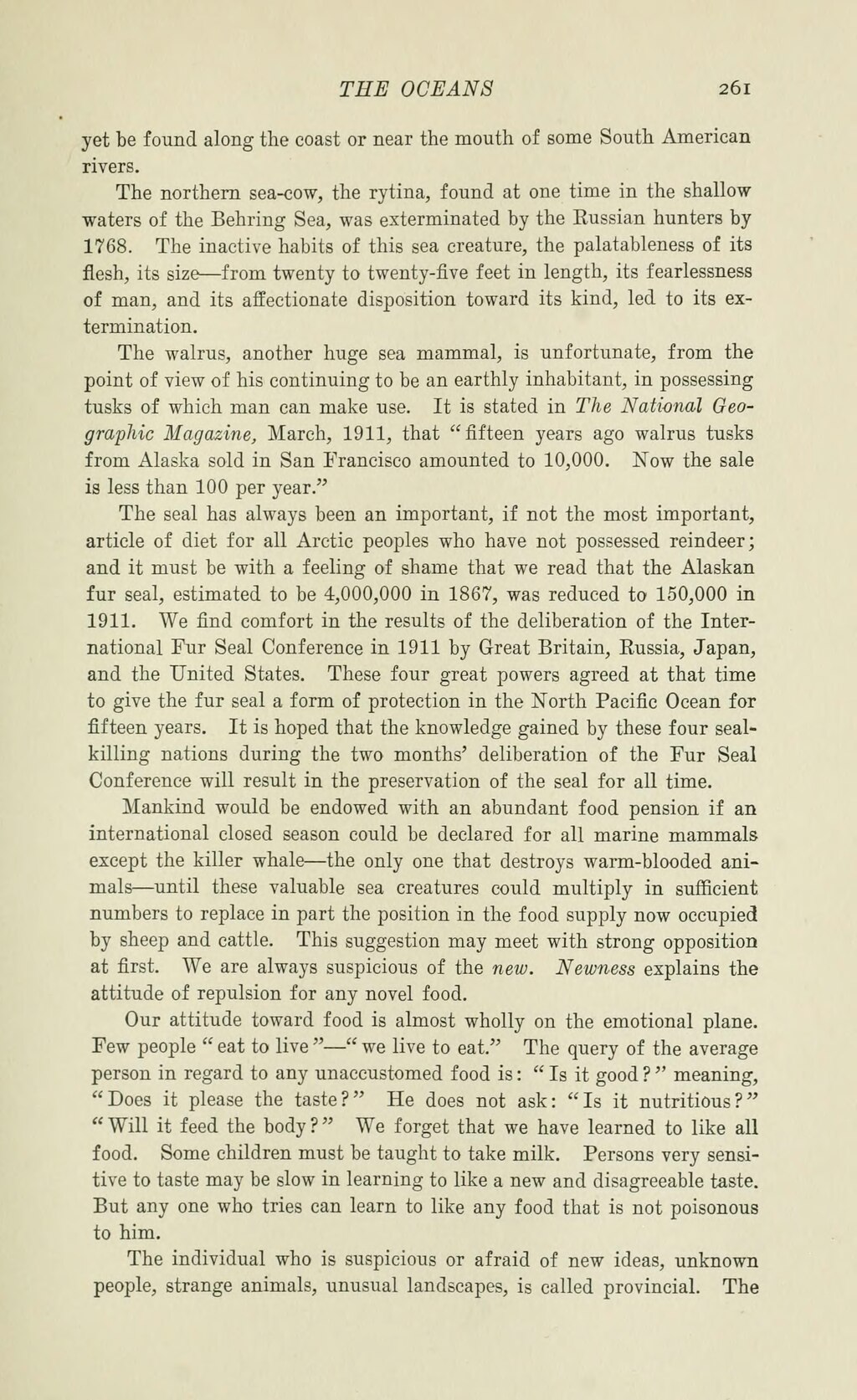TEE OCEANS 261
yet be found along the coast or near the month of some South American riyers.
The northern sea-cow, the rytina, found at one time in the shallow waters of the Behring Sea, was exterminated by the Russian hunters by 1768. The inactive habits of this sea creature, the palatableness of its flesh, its size — from twenty to twenty-five feet in length, its fearlessness of man, and its affectionate disposition toward its kind, led to its ex- termination.
The walrus, another huge sea mammal, is unfortunate, from the point of view of his continuing to be an earthly inhabitant, in possessing tusks of which man can make use. It is stated in The National Oeo- graphic Magazine, March, 1911, that '^fifteen years ago walrus tusks from Alaska sold in San Francisco amounted to 10,000. 'Sow the sale is less than 100 per year.'*
The seal has always been an important, if not the most important, article of diet for all Arctic peoples who have not possessed reindeer; and it must be with a feeling of shame that we read that the Alaskan fur seal, estimated to be 4,000,000 in 1867, was reduced to 150,000 in 1911. We find comfort in the results of the deliberation of the Inter- national Fur Seal Conference in 1911 by Great Britain, Russia, Japan, and the United States. These four great powers agreed at that time to give the fur seal a form of protection in the North Pacific Ocean for fifteen years. It is hoped that the knowledge gained by these four seal* killing nations during the two months' deliberation of the Fur Seal Conference will result in the preservation of the seal for all time.
Mankind would be endowed with an abundant food pension if an international closed season could be declared for all marine mammals except the killer whale — ^the only one that destroys warm-blooded ani- mals — ^until these valuable sea creatures coidd multiply in sufficient numbers to replace in part the position in the food supply now occupied by sheep and cattle. This suggestion may meet with strong opposition at first. We are always suspicious of the new. Newness explains the attitude of repulsion for any novel food.
Our attitude toward food is almost wholly on the emotional plane. Few people *' eat to live *' — " we live to eaf The query of the average person in regard to any unaccustomed food is : "Is it good ? *' meamng, "Does it please the taste ?*' He does not ask: "Is it nutritious?'* " Will it feed the body ? We forget that we have learned to like all food. Some children must be taught to take milk. Persons very sensi- tive to taste may be slow in learning to like a new and disagreeable taste. But any one who tries can learn to like any food that is not poisonous to him.
The individual who is suspicious or afraid of new ideas, unknown people, strange animals, unusual landscapes, is called provincial. The
�� �
